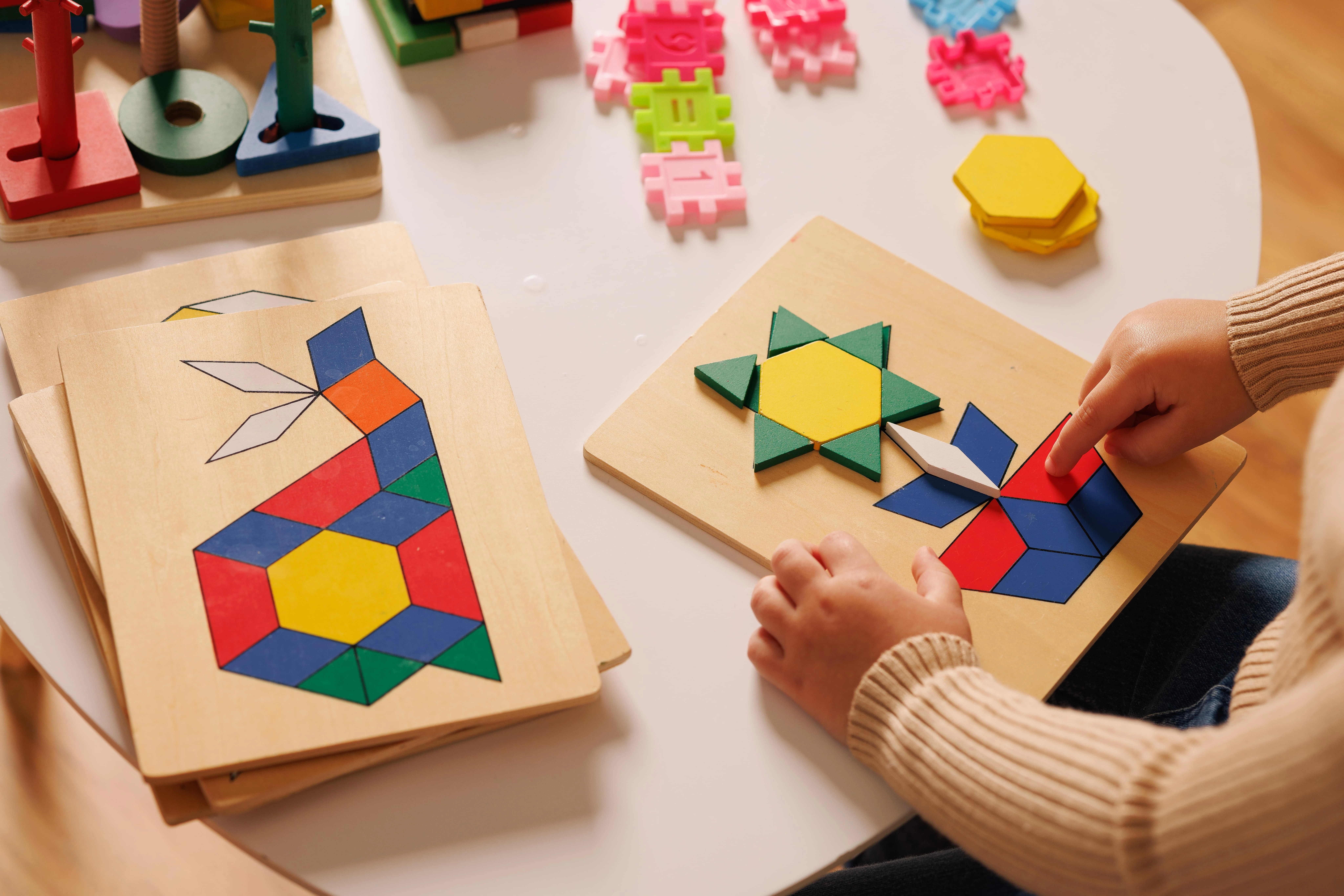3rd Grade Math Lesson Plan with Template

Are you ready for back-to-school season?
Many teachers look forward to the creative part of preparing for a new year, like decorating their classrooms and creating personalized supplies for their students.
But once that fun is done, it’s time to dig into the important stuff, lesson plans.
If you’re looking for 3rd grade math lesson plan examples, you’re in the right place! This article has a free 3rd grade math lesson plan that you can print or use in your classroom.
3rd Grade Math Lesson Plan with Template

As the school year starts, it’s essential to look ahead and know what your goals are.
Here is a list of key skills and concepts that 3rd grade students are expected to master in math by the end of the school year.
Multiplication and Division
- Interpret products and quotients of whole numbers
- Use multiplication and division to solve word problems
- Understand division as an unknown factor problem
- Fluently multiply and divide within 100
- Know from memory all products of two single-digit numbers
- Recognize and use factor pairs
Fractions
- Understand fractions as numbers
- Represent fractions on a number line
- Find equivalent fractions and compare fractions by reasoning about their size
- Represent and interpret data with line plots that include fractional measurements
Measurement and Data
- Solve problems involving measurement and estimation of intervals of time, liquid volumes and masses of objects
- Tell and write time to the nearest minute and solve word problems involving addition and subtraction of time intervals
- Create and interpret picture graphs, bar graphs and line plots
- Measure and estimate liquid volumes and masses using standard units (grams, kilograms, milliliters, liters)
Geometry
- Understand concepts of area and relate area to multiplication and addition
- Find the area of a rectangle with whole-number side lengths
- Recognize perimeter as an attribute of plane figures and distinguish between linear and area measures
- Solve real-world and mathematical problems involving perimeters of polygons
Place Value and Number Operations
- Use place value understanding to round whole numbers to the nearest 10 or 100
- Fluently add and subtract within 1,000
- Solve two-step word problems using the four operations and represent these problems using equations with a letter standing for the unknown quantity
- Use strategies and algorithms based on place value to perform multi-digit arithmetic
Understanding of Polygons and Their Properties
- Identify and classify shapes based on their attributes, such as number of sides
- Understand and compare the attributes of different polygons, including recognizing equal areas
Free Sample Third Grade Lesson Plan

If this is your first year teaching, a sample lesson plan can be especially helpful. Working from an example can ensure that you don’t miss anything before the first day.
It can also speed up the process when you are batch-creating lesson plans.
This free sample lesson plan below can be used as is or be modified. Feel free to use parts of it and leave off others.
Your students are unique and each lesson should fit their needs.
If you teach multiple grades or are just looking for a different grade level, check out our other lesson plans.
- 1st Grade Math Lesson Plan
- 2nd Grade Math Lesson Plan
- 4th Grade Math Lesson Plan
- 5th Grade Math Lesson Plan
- 6th Grade Math Lesson Plan
- 7th Grade Math Lesson Plan
- 8th Grade Math Lesson Plan
- Generic Math Lesson Plan (fantastic for homeschooled families!)
Ready to get started? Here’s the lesson plan!
3rd Grade lesson Plan: Subtracting Two-Digit Numbers Using Borrowing

Learning Objectives or Goals
- Understand the concept of borrowing: Students will understand why and when borrowing is necessary in subtraction.
- Perform subtraction with borrowing: Students will accurately subtract two-digit numbers requiring borrowing.
- Apply subtraction skills in real-life scenarios: Students will solve word problems involving subtraction with borrowing.
Teaching Strategies
- Direct Instruction: Explanation and demonstration of the borrowing process.
- Guided Practice: Interactive problem-solving with teacher support.
- Independent Practice: Individual work on subtraction problems.
- Collaborative Learning: Pair or group activities to reinforce learning through peer interaction.
- Use of Manipulatives: Visual aids and manipulatives to solidify the borrowing concept.
Materials Needed
- Whiteboard and markers
- Chart paper and colored markers
- Base-ten blocks or place value charts
- Worksheets with subtraction problems
- Math journals
- Pencils and erasers
- Interactive whiteboard (optional)
Procedures and Activities
- Introduction (10 minutes):
- Begin with a quick review of basic subtraction without borrowing.
- Introduce the concept of borrowing using a simple story (e.g., borrowing apples from a neighbor).
- Direct Instruction (15 minutes):
- Demonstrate a subtraction problem on the whiteboard that requires borrowing (e.g., 42 - 27).
- Show each step clearly:
- Write the numbers vertically: Ensure students line up the tens and ones columns.
- Identify the need to borrow: Explain that you cannot subtract a larger digit (7) from a smaller digit (2).
- Borrow from the tens place: Cross out the 4 (tens place), change it to 3, and add 10 to the ones place (making it 12).
- Complete the subtraction: Subtract the ones place (12 - 7) and the tens place (3 - 2).
- Guided Practice (20 minutes):
- Distribute base-ten blocks or place value charts.
- Walk through several problems as a class, using the blocks to visualize borrowing.
- Encourage students to solve the problems step-by-step, with teacher support as needed.
- Independent Practice (15 minutes):
- Provide worksheets with a variety of subtraction problems requiring borrowing.
- Circulate the room, offering help and ensuring students understand the process.
- Collaborative Learning (10 minutes):
- Pair students to solve a set of word problems together.
- Use real-life scenarios (e.g., "Sarah had 53 candies and gave 28 to her friend. How many does she have left?").
- Encourage discussion and explanation of each step.
- Closing and Review (10 minutes):
- Summarize the day's lesson, emphasizing key points of the borrowing process.
- Solve one or two problems as a class to reinforce the day's learning.
- Answer any remaining questions from students.
Assessment and Grading
- Formative Assessment: Observe students during guided and independent practice, noting those who struggle with the concept.
- Worksheets: Grade based on accuracy and understanding of the borrowing process.
- Word Problems: Evaluate pair work for correct solutions and clear explanations of the borrowing steps.
Goals for the End of the Lesson or Unit
- Students should confidently and accurately subtract two-digit numbers using borrowing.
- Students should demonstrate an understanding of borrowing through written reflections and verbal explanations.
- Students should be able to apply their subtraction skills to solve real-life problems.
- Progress should be tracked and additional support provided to students who need further practice.
Improve Grade 3 Student Math Performance with Prodigy

Want to bring more excitement to your classroom while keeping your students on track with their learning?
Prodigy Math is here to help! This captivating online world allows students to embark on an adventure as they practice their math skills.
Designed with teachers in mind, Prodigy Math aligns with curriculum standards and compiles all scoring information into an easy-to-use teacher dashboard.
Say goodbye to hours spent making and grading math worksheets—Prodigy Math handles all of that for you! The game’s smart algorithm identifies your students' strengths and areas for improvement, adapting the content to meet their exact needs.
And the best part? You can get started with a teacher account for free today!










